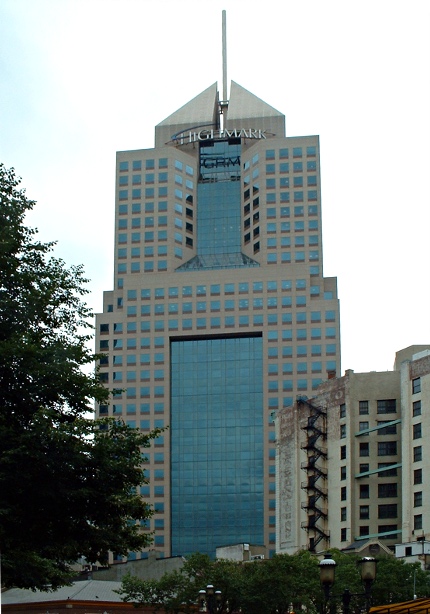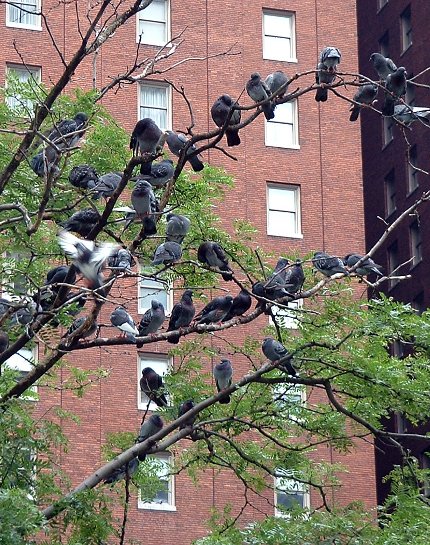
Looking up at Philip Johnson’s PPG Tower, the centerpiece of PPG Place and the de-facto symbol of downtown Pittsburgh, from the Diamond.

Looking up at Philip Johnson’s PPG Tower, the centerpiece of PPG Place and the de-facto symbol of downtown Pittsburgh, from the Diamond.

This little corner of the Diamond (the Diamond is called “Market Square” on maps) looks like the Pittsburgh of olden times, before steel-cage construction made skyscrapers sprout everywhere. Taking away the neon and the road signs, it could be a Victorian engraving. Father Pitt begs your forgiveness for the cheap lens on this digital camera, which makes straight lines impossible. (Update: With better software, we have been able to eliminate most of the distortion. For comparison, the original image is reproduced below.)
The Diamond is a block up Forbes Avenue from the Gateway Center subway station.

Fifth Avenue Place looms over the Diamond (which is spelled “Market Square,” but pronounced “Diamond”). At night, the needle at the top is illuminated from below, so it looks as if the building is about to emit a space probe.

Downtown Pittsburgh can be as crowded for pigeons as it is for people. This tree bears its strange avian fruit in Mellon Square.
An ornate iron grille on the side of the William Penn Hotel. Even in the most prosaic things, beauty and function can get along happily together. —An update: The architect of the William Penn was Benno Jassen, whose favorite ironwork artist was Samuel Yellin. Although old Pa Pitt has not been able to find any reference to the artist who made them, he believes that these grilles are probably Yellin’s work.

The demolition of a building on Forbes Avenue downtown laid bare not only a splendid canvas for some rather unimaginative graffiti, but also half of a painted sign for a Victorian cafe that once occupied this spot. The part that survives is in an extraordinary state of preservation, so we can appreciate the rakish backslant of the bold but ornate letters that spell out “–mmel’s Cafe.”

The Three Rivers Arts Festival opened yesterday. Here we see the artist’s market behind the fountain at Gateway Center.
The double-decker Fort Pitt Bridge over the Monongahela enters downtown Pittsburgh from the Fort Pitt Tunnels, giving first-time visitors a shockingly spectacular introduction to the skyline as they arrive from the airport. The bridge itself matches the Fort Duquesne Bridge over the Allegheny, framing the Point with bright yellow arches.
Seeing downtown Pittsburgh from Point State Park, you might be forgiven for supposing that Pittsburgh had not existed before World War II. Not a single prewar building is visible; the “Renaissance” seems thorough and complete. The entire Point, once a seedy warehouse district, was redeveloped after the war, with a big chunk left open for Point State Park, and the rest covered with modernist towers.

Seeing the Granite Building in black and white (taken with a Zenit camera with a 28-mm Vivitar lens) brings out the variety of textures and ornaments. In the background is the Keenan Building.